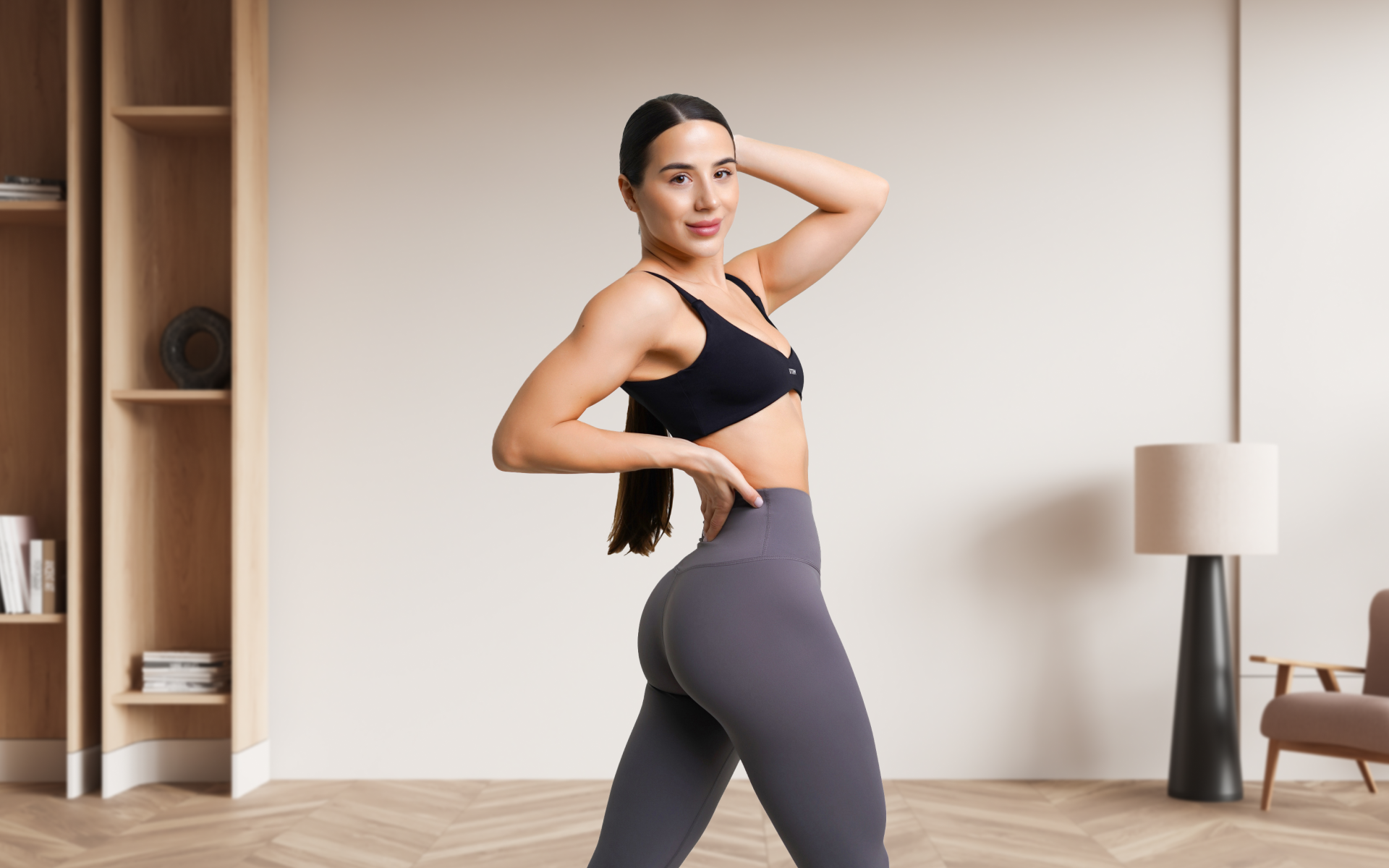Sure, working out is fun and definitely has its perks. There’s also no shortage of workout plans you can choose from ranging from the fast paced HIIT to the fat burning cardios. It’s no secret that cardio is one of the most effective ways to achieve your fitness goals. However, you know what would make it even better? Stationary bikes. This article tells you why.
Get your personalized
meal plan!
What Are Stationary Bikes?
First off, the basics. Chances are you’ve heard of them being mentioned in a lot of places, but what are they exactly?
Simply put, these are indoor machines with a structural makeup of a regular bike, fitted with a device to adjust resistance.
The Purpose
Stationary bikes are meant to provide low-impact aerobic workouts for people who exercise indoors. You can take this option if your workout goals include:
- Losing weight
- Cardiovascular fitness
- Physical therapy like knee rehabilitation programs
Also, if your workout options are limited due to lower back pains, hip or joint pains, stationary bike workouts may just do the trick.
Next, we look at some of the stationary bike benefits that have made this type of workout popular over the years.
Read More: 1 Month Workout Plan To Get Ripped: The Ultimate Guide
Benefits Of A Stationary Bike Workout Plan
Here are 6 reasons why you should include an indoor cycling workout plan to your routine today:
Aids In Weight Loss
Did you know that you can burn up to 600 calories an hour with a stationary bike workout plan? This makes it one of the most efficient ways of burning excess calories quickly.
This 2010 study showed that indoor cycling alongside a low-calorie diet was effective at reducing body fat and weight among participants. It also led to the decrease of triglyceride and cholesterol levels (2).
You should, however, note that all that depends on the intensity of your overall workout and your body weight.
Boosting Cardiovascular Fitness
Cycling is one of the best ways to get your heart pumping.
Aerobic workouts have been shown to be effective at strengthening your lungs, heart and muscles. This then improves blood and oxygen circulation in your body. As a result, your overall health will be improved in several ways including (1):
- Lower blood pressure
- Better sleep quality
- Improved cognition and brain functioning
- Lower stress levels and better mood
- Increased energy
- Stronger immune system
- Stable blood sugar
Better Knee Support
Cycling has been shown to aid in keeping your knee joint naturally lubricated. It also emphasizes building strength in your quads which may aid in reducing knee pain. Strengthening the muscles around your knee and giving them more support is key in reducing knee pain (5).
Provides Low-Impact Workouts
High-impact aerobic exercises like jogging, running, or jumping can exert a lot of stress on your hips, ankles, knees, and other joints.
Stationary bike workouts, on the other hand, usually make use of smooth movements when strengthening your bones and joints.
You aren’t lifting your feet off the pedals when using a stationary bike, which makes it kinder to your joints while providing a challenging and effective workout.
This goes a long way in alleviating excess pressure that would have otherwise been placed on them, making it excellent for people with joint injuries.
Lean and toned up body isn’t just a far-fetched fantasy. Check out the BetterMe app and watch it propel your weight loss journey into high gear!
Gives Room For Interval Training
Interval training involves a cycle of short bursts of intense workout with longer intervals of less intense workouts. You can vary resistance levels making training at low, medium and high intensities possible.
This type of training burns more calories in less time while elevating your cardiovascular fitness (4).
Convenience And Increased Safety
You can always work out with stationary bikes despite the traffic or weather outside. While cycling outside is usually effective, it comes with several environmental risks that you can’t control.
That being said, you can always work out safely and comfortably at any time of the year. All you need for that amount of convenience is a stationary bike!
Stationary Bike Workout Plan For Different Fitness Levels
One of the most crucial aspects of achieving your workout goals is understanding your fitness level. Going too hard if you’re a beginner may result in injuries, and for the pros, simpler versions may not be as effective.
Next, we look at some of the workout plans that are best suited for beginners, pros and senior:
Stationary Bike Workout Plan For Beginners
First off, the bike setup. If you’re new to using a bike, take a few minutes to familiarize yourself with how it works.
If you’re in a gym, consult with your floor manager to see if you can get an orientation on the different bikes available. This will help you make the right choice as to what to use.
Other useful things to keep in mind include:
- Whenever you stand next to an upright bike, ensure the seat is level with the top of your hips.
- Carefully adjust the handles, seat, and pedals so that they match your height and reach.
- Ensure you have a slight bend in your knees at the bottom of each pedal stroke.
- Learn how to adjust the resistance levels during workouts since you’ll be changing them often at different intervals.
Read More: Mini Workouts Throughout The Day: An Unconventional Option With Great Results
The Workout
After setting up your bike, start with the standard warm-up before getting into the workout.
To get the most out of this workout plan:
Build Your Endurance
Your legs will quickly get exhausted if you’re not used to the bike. Take time to progressively build your endurance by going as long as you can and stopping when you’re ready. Finally, it’s okay to stop a few times and stretch your legs if needed.
Work Within The Recommended Perceived Exertion (RPE)
Find a resistance/pace that will let you work within the suggested RPE on a scale of 1-10.
RPE is a measure of how hard it feels when working with the chosen level of resistance. If it’s too hard, take the resistance and speed down a notch, if it’s too easy, increase it.
Other guidelines include:
- Perform this workout about 3 times weekly, allowing a day of rest in between.
- Remember to stretch your lower body after working out.
- Progressively add a few minutes each time you work out until you reach the 30 minute mark.
Here’s how a sample workout plan will look like:
- Start by warming up at a comfortable pace while keeping the resistance low (5 minutes at 4 RPE).
- Now increase the resistance gradually by about 1 to 4 increments or until you’re pushing harder than your warm-up pace. You should be able to maintain a conversation while feeling the effort. This sets your baseline pace (3 minutes at 5 RPE).
- Increase your pace and/or your resistance until the effort you’re putting in is slightly higher than the baseline (2 minutes at 5 to 6 RPE).
- Reduce your pace or resistance back to your baseline level (3 minutes at 5 RPE).
- Now once again increase your pace until it’s slightly harder than your baseline level (2 minutes at 5 to 6 RPE).
- Reduce the pace and resistance back to a comfortable level and let yourself cool down (5 minutes at 4 RPE).
Once you can pull this 20-minute workout, progressively add another 5 minute segment with three at the baseline and two at a harder level. Do this for a week until or until it’s comfortable.
Now you can add another three minutes of easier effort and two harder intervals to bring the totals to 30 minutes.
Stationary Bike Workout Plan For Pros
This scheme makes use of interval training to deliver intensity while keeping you engaged.
The routine will last for about 30 minutes but it’ll keep you busy so don’t worry about getting bored. It will also switch up your pedaling pace and resistance level every 30 seconds to 1 minute which aids in fat burning around the middle section.
Here’s how a sample weight loss stationary bike workout plan will look like:
- Start by warming up while maintaining low resistance (5 minutes at 3 RPE).
- Now switch the resistance level to high and sprint (1 minute at 7 to 8.5 RPE).
- Turn down the resistance level to moderate and slow down your pace (1 minute at 3 to 5 RPE).
- Next, sprint at high resistance (1 minute at 7 to 8.5 RPE).
- Recover using moderate resistance levels then slow down (2 minutes at 3 to 5 RPE).
- Return to high resistance levels and sprint (45 seconds at 7 to 8.5 RPE).
- Go back to moderate resistance and slow down (2 minutes at 3 to 4 RPE).
- Change to high resistance and sprint (2 minutes at 7 to 8.5 RPE). Repeat step 7 and 8 three times ending on moderate resistance.
- Switch to high resistance and sprint (30 seconds at 7 to 8.5 RPE).
- Return to moderate intensity and slow down the pace (2 minutes at 3 to 5 RPE).
- Switch to low resistance and cool down (4 minutes at 3 to 4 RPE).
Looking for a way to break the vicious cycle of weight loss and tone up all the jiggly parts? Watch the extra pounds fly off and your muscles firm up with the BetterMe app!
Stationary Bike Workout Plan For Seniors
Now there are several stationary bikes one can use to get fitter and healthier. However, for seniors, the most recommended type is the recumbent bike.
As with all workouts, getting the right form will lead to the best results while the wrong strategy and form often leads to injuries.
Setting Up
First off, you’ll need to know your maximum intensity and work from there. Find out what the maximum heart rate for your age is using the formula 220 – your age (3). The goal of finding this is ensuring you maintain a healthy heart rate without compromising the results.
After you get your maximum intensity, you’ll be able to tell what you can do all-out for about 30-45 seconds. This becomes your 100% intensity.
The Workout
Here’s what a sample workout plan will look like:
Warm Up
Start by warming up for about 3 minutes. This is key in preventing injury, avoiding erratic spikes in your heart rate and protecting your body (6). The goal is to use up the 3 minutes, so don’t rush it.
25% Intensity
Now you take things up a notch. Aim to achieve about 25% intensity on the bike for about 2 minutes. It won’t be a huge leap from your warmup speed, but you’ll start feeling it slightly.
50% Intensity
At this point your body has acclimated to the workout and is ready to go. Target to attain and maintain 50% intensity for about 5 minutes. Remember, the intensity varies from person to person. You’ll be ironing out any issues in your technique while sweating things out a bit.
75% Intensity
This is the peak of your workout. Work up your intensity up to about 75% for a total of 15 minutes. Focus on your heart and maintain it at the 220 – age level, never moving past it.
50% Intensity
You’re approaching the end of your workout. Steadily bring it back to 50% intensity and maintain it for about 5 minutes. If you’re feeling exhausted, it’s okay to drop the pace even further. The goal is to avoid coming to a sudden stop as that only increases your risk of injury.
25% Intensity
Finally, drop to 25% intensity and maintain it for about 2 minutes. This will technically involve moving the pedals and maintaining a smooth pace that is easy to handle after the workout.
Wind Down
Take about 2 minutes to wind down by slowly pedaling to just keep your legs moving. You’ll start catching your breath and feeling loose at the same time.
Safety Tips For Stationary Bike Workouts
While stationary bikes are generally safer than outdoor cycling, there are still some safety concerns to consider. They include:
- Improper balance can lead to you falling off the back and injuring yourself.
- You may end up developing muscle injury or fatigue due to poor form or repetitive motion.
To stay safe, you should:
- Listen to your body. Allow yourself time to recover or if you develop any muscle aches from cycling.
- Position yourself correctly and use the right form. Whenever you’re unsure, ask a certified trainer for help.
- Don’t push yourself beyond your limits when cycling in a group class. This can be dangerous, especially if you’re new to exercising.
- Speak with your doctor if you have issues with your blood pressure, balance or heart health to ensure the workout is safe for you.
The Bottom Line
Cycling indoors is an effective way of meeting your fitness goals despite the prevailing environmental factors. Additionally, it has several cardiovascular benefits, can boost muscle strength, and lose weight while being gentle on your joints.
Get your personalized
meal plan!
DISCLAIMER:
This article is intended for general informational purposes only and does not serve to address individual circumstances. It is not a substitute for professional advice or help and should not be relied on for making any kind of decision-making. Any action taken as a direct or indirect result of the information in this article is entirely at your own risk and is your sole responsibility.
BetterMe, its content staff, and its medical advisors accept no responsibility for inaccuracies, errors, misstatements, inconsistencies, or omissions and specifically disclaim any liability, loss or risk, personal, professional or otherwise, which may be incurred as a consequence, directly or indirectly, of the use and/or application of any content.
You should always seek the advice of your physician or other qualified health provider with any questions you may have regarding a medical condition or your specific situation. Never disregard professional medical advice or delay seeking it because of BetterMe content. If you suspect or think you may have a medical emergency, call your doctor.
SOURCES:
- Aerobic exercise: Top 10 reasons to get physical (2022, mayoclinic.org)
- Effect of diet and indoor cycling on body composition and serum lipid (2010, pubmed.gov)
- Exercise intensity: How to measure it (2021, mayoclinic.org)
- Interval Training Burns More Fat, Increases Fitness, Study Finds (2007, uoguelph.ca)
- The pain-relieving qualities of exercise in knee osteoarthritis (2013, nih.gov)
- Warm Up, Cool Down (n.d., heart.org)














